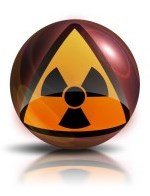Radiation Information
About Radiation

The term radiation is very broad and includes such things as light and radio waves. It is most often used to mean ionizing radiation. Ionizing radiation is particles or rays given off by unstable atoms. Radiation produced inside a nuclear reactor occurs when atoms split. This produces heat, which is used to generate electricity.
The risk from radiation exposure can be reduced by shortening the time of exposure, getting farther away from the source, and shielding or blocking the source. It is known that whole-body radiation doses of more than 10,000 millirem over a short period of time can cause a slight increase in a person’s risk of developing some types of cancer years after exposure. In other words, if you were to receive a short-term exposure of 11,000 millirem (11 rem), your estimated risk of developing some type of cancer would increase by 0.05 percent.
During an emergency, if doses of radiation are expected to be greater than 1,000 millirem (an amount greatly below what would be necessary to see an increased risk of developing cancer), protective actions such as evacuations or sheltering in place would be directed. The purpose of these actions would be to keep people away from the radioactive materials that might be released during a severe accident.
Diablo Canyon Power Plant’s design makes a large release of radioactive materials extremely unlikely. The safety systems at the plant are designed to control and contain the release of radioactive materials under accident conditions. The federal and state limits on radiation exposure established for the public, guide emergency planning for protective actions. The emergency plans for DCPP and San Luis Obispo County are designed to minimize the exposure to the public by using the protective actions of evacuation and sheltering in place.
Contact Us
The County Office of Emergency Services (OES)
1055 Monterey Street D430
San Luis Obispo, CA 93408
County OES Business Line: 805-781-5678
County OES Business Email: oes@co.slo.ca.us




